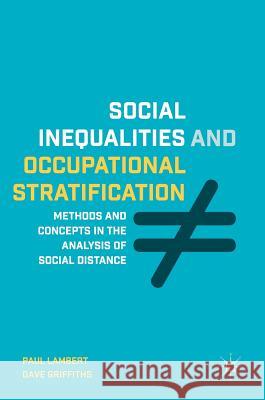Social Inequalities and Occupational Stratification: Methods and Concepts in the Analysis of Social Distance » książka
topmenu
Social Inequalities and Occupational Stratification: Methods and Concepts in the Analysis of Social Distance
ISBN-13: 9781137022523 / Angielski / Twarda / 2018 / 384 str.
Social Inequalities and Occupational Stratification: Methods and Concepts in the Analysis of Social Distance
ISBN-13: 9781137022523 / Angielski / Twarda / 2018 / 384 str.
cena 403,47
(netto: 384,26 VAT: 5%)
Najniższa cena z 30 dni: 385,52
(netto: 384,26 VAT: 5%)
Najniższa cena z 30 dni: 385,52
Termin realizacji zamówienia:
ok. 22 dni roboczych
Bez gwarancji dostawy przed świętami
ok. 22 dni roboczych
Bez gwarancji dostawy przed świętami
Darmowa dostawa!
This book explores how structures of social inequality are linked to the social connections that people hold.











